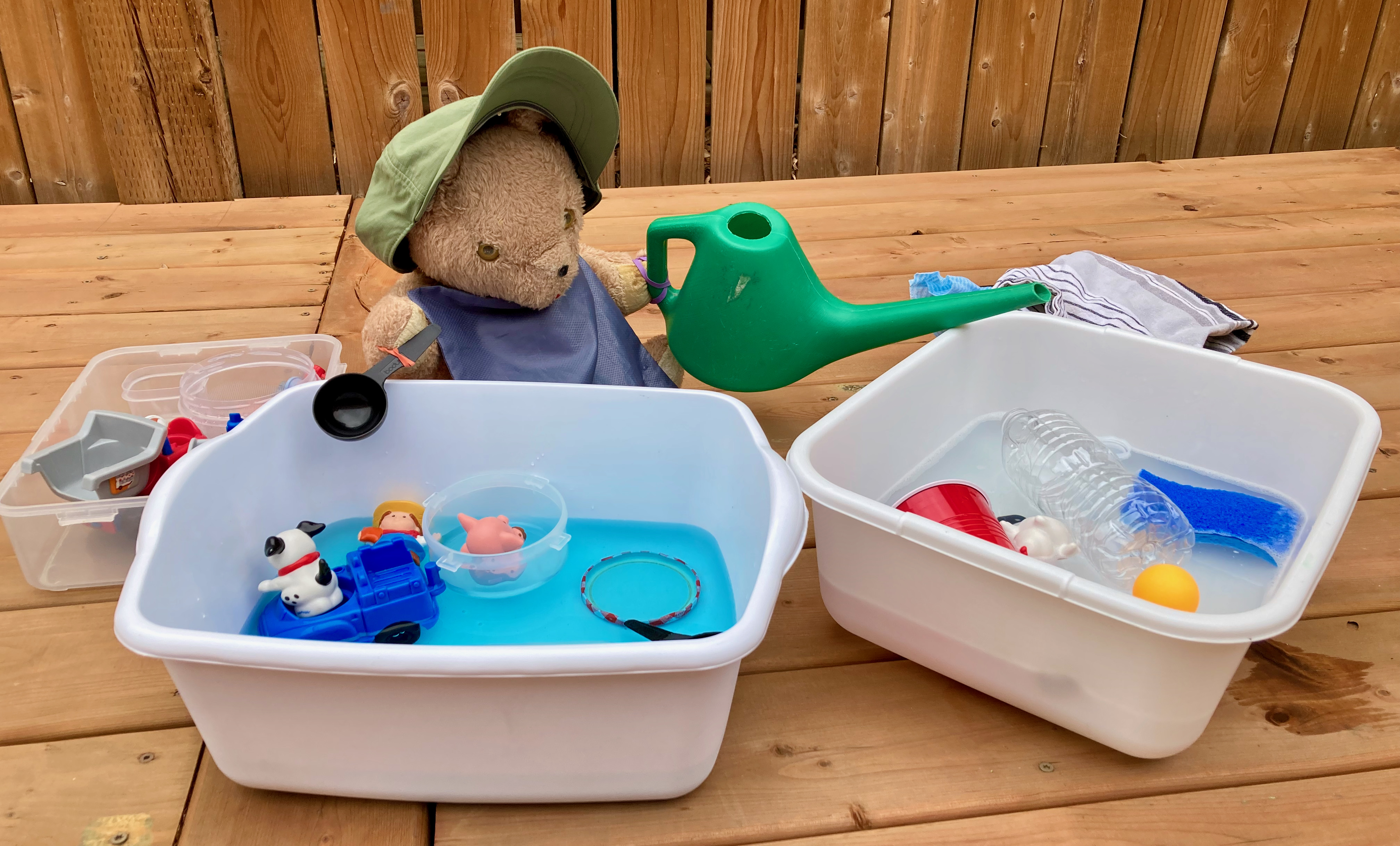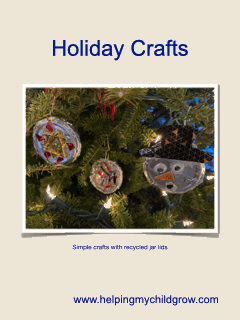Splish, Splash, Splosh!
Grab a bowl of water, a few empty washed out plastic food containers and some spoons and get playing.
Water play is a fun, sensory activity that encourages exploration, investigation and creativity. Water play activities can be set up indoors, or outdoors, and help your child to develop language, motor, cognitive and social skills.
What you need::
(This is just a suggested list of resources, you do not have to use everything on it. Use what you can find.)
-
A large plastic box/bowl or bucket half filled with water, paddling pool or bathtub
-
Recycled yogurt pots and other plastic food pots (Make sure that these are empty and have been washed out)
-
Sieves or plastic tubs with holes punched in the bottom
-
Plastic bowls and/or cups of different sizes
-
Spoons, scoops, ladles
-
Plastic funnels
-
Plastic measuring jugs
-
Buckets
-
Empty washing up liquid bottles and plastic bottles (washed out)
-
Pieces of clean plastic tubing or gutter pipe
-
Watering can
-
Waterproof toys, e.g. duplo, cars, plastic ducks
-
Small world toys, e.g. dinosaurs, sea creatures, animals (make sure that toys are waterproof and age appropriate)
-
Bubbles or food colouring
Top tip: Adding a few drops of food colouring, or bubbles, to the water will enhance the sensory experience. Remember to make sure that anything you add to the water is non-toxic and suitable for use by children.
-
Recycled cardboard tubes and boxes, aluminium foil dishes, corks, sponges, lollipop sticks etc. (Great for encouraging your child to think about what happens to different materials in water and to explore floating and sinking)
-
Sponges and towels for washing and drying toys (Great if you want to make the water play activity a car wash)
-
Waterproof apron
Top tips:
- Encourage your child to wear a waterproof apron and to roll their sleeves up before they play with the water.
- Have a towel ready for your child to dry themselves with when they have finished playing.
- If you are setting up the activity indoors, place the bowl on a towel or wipeable, waterproof surface - things will get messy and wet!
- Remember water can be dangerous, always supervise your child when they are playing with water.
What skills does water play develop:
Fine motor skills and hand-eye co-ordination are developed as your child scoops water and pours water from one container to another, through funnels and into bottles.
Gross motor skills and muscle strength are developed as your child begins to lift and move heavier containers of water.
Language and communications skills. Water play provides lots of opportunities for developing language and communication skills.
Encourage your child to:
-
Build their vocabulary as they listen to and use new words, e.g. pour, scoop, empty, full, half-full, liquid
-
Ask for objects that they want to play with.
-
Talk about what they are doing.
-
Use their senses to investigate the world around them.Talk about how the water looks, feels and sounds.
-
Sing and retell favourite water themed songs and stories from memory using toys as props. e.g. Five little ducks went swimming one day, The Rainbow Fish by Marcus Pfister
Social skills. Social skills such as waiting and turn-taking are developed as your child plays alongside or with others. e.g. waiting to use a container, or, working co-operatively with a peer to fill the same bucket with water.
Cognitive skills
Water play activities provide lots of fun, hands-on opportunities for observing and investigating scientific and mathematical concepts and problem-solving.
Discover more about how water play can be used to promote understanding of scientific concepts such as floating and sinking in A boat that floats?.
Water play activities are also a great way for kids to explore the mathematical concepts of capacity and measurement.
As water is poured between containers, encourage your child to:
-
Use the vocabulary of capacity,e.g. full, empty, nearly full, nearly empty, half full, a quarter full, volume etc.
-
Explore non-standard units of measure. Ask questions such as,
-
How many yogurt pots of water do you need to fill this bucket?
-
How many scoops of water do you think you need to fill a yogurt pot?
-
Do you think that using scoops/pots is the best way of measuring the volume of a container? Why/why not?
-
-
Explore standard ways of measuring liquids using graduated jugs and containers marked in millilitres, litres, pints etc.
But most of all, encourage your child to have fun playing with water - you will inspire their curiosity to learn and help them grow.
Other posts that you might like:


